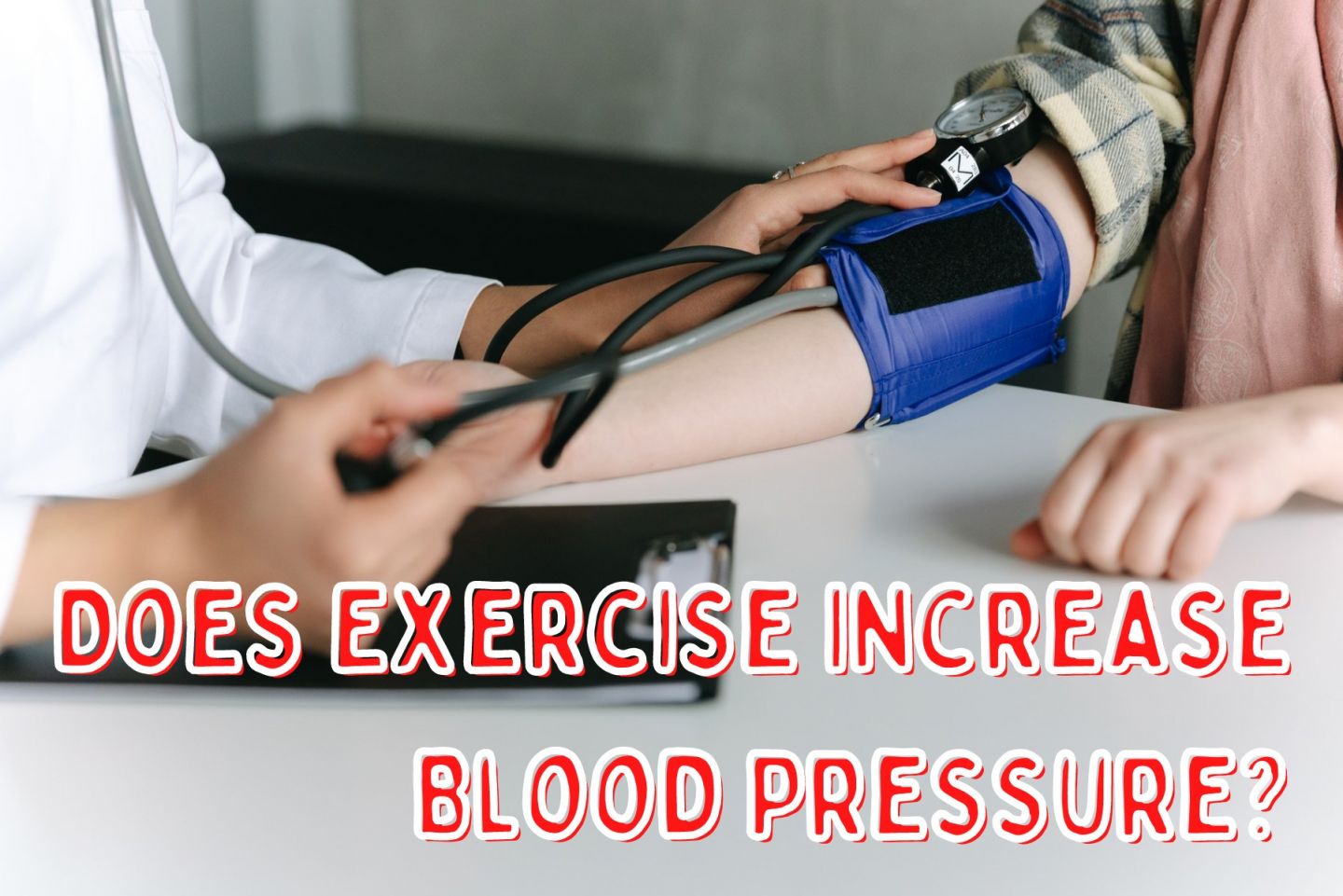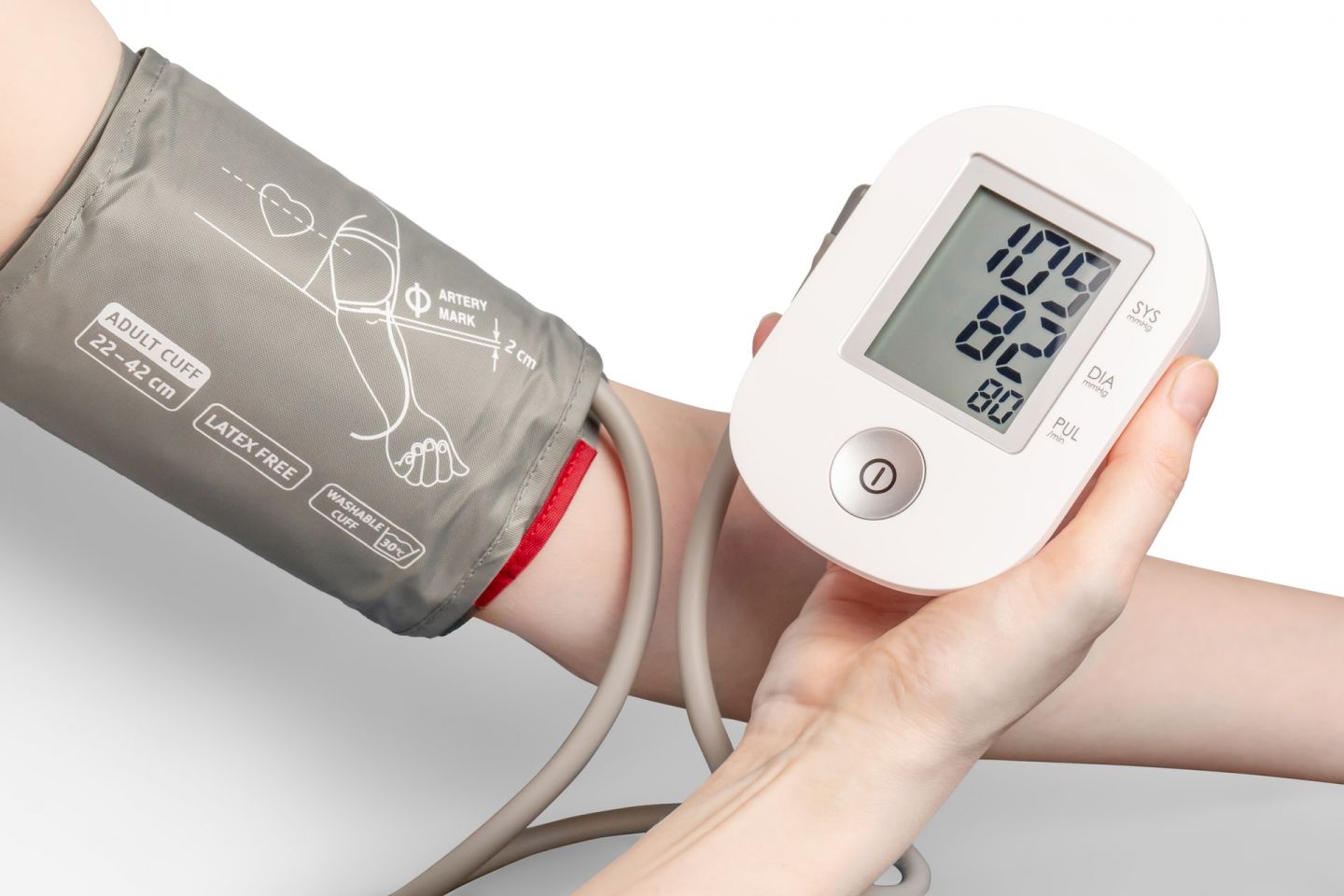Does Exercise Increase Blood Pressure?
17th Jun 2022
Chris Nicklin is a certified Personal Trainer with over 7 years' experience, and the owner of Nxtep Personal Training. Chris qualified from Edge Hill University with a Bachelor of Science (BSc) degree in Sports Coaching and Performance Development, and has delivered over ten thousand one-to-one Personal Training sessions.

The short answer is yes, exercise will cause your blood pressure (BP) to rise for a short time. For most individuals, there is nothing to be concerned about, as when the activity is stopped it should rapidly return to normal. If you have high blood pressure, your doctor or nurse may advise you to take blood pressure medications first before beginning to exercise. However, regular moderate exercise can can also bring down your blood pressure reading.
In this article, we’ll go into more detail about the connection between BP and exercise, answering some of the most commonly asking questions on the subject.
What is blood pressure?
First, let’s take a look at what blood pressure is. BP is the force of blood pushing against the walls of your arteries, and it’s measured in millimeters of mercury (mmHg).
But really, blood pressure is a measure of two things. Firstly, it’s the force or pressure within your artery walls when blood is pushed from your heart to the rest of your body. Secondly, it is also the pressure in the arteries while the heart is not beating.
As a result, when your BP is taken, you will hear two values. For example, you may be told that your blood pressure is 110/70 mmHg – the top figure is known as systolic blood pressure, while the bottom number is known as diastolic pressure.
What are the different types of blood pressure?
As mentioned already, there are two types of blood pressure: systolic and diastolic. Your systolic blood pressure is the highest pressure and it corresponds to the number on your blood pressure cuff when you are standing still. The word is Latin, and means “contraction”.
Your diastolic blood pressure is the lowest pressure and it corresponds to the number on your BP cuff when you are sitting or lying down. It is the Latin word for “dilation”, meaning expansion.
Systolic BP (or the peak reading) is when the artery walls are constricted most and diastolic BP (or the lower reading) is when the artery walls are most relaxed.
The ideal systolic blood pressure for an adult is widely agree to be between 90/60mmHg and 120/80mmHg.
However, the ranges change for men and women, and also with age. So we’ve put together the charts below to show the differences over time for both men and women.
Ideal Blood Pressure Chart for Men
|
Age (Male) |
Systolic BP | Diastolic BP |
|
21-25 |
120.5 |
78.5 |
|
26-30 |
119.5 |
76.5 |
|
31-35 |
114.5 |
75.5 |
|
36-40 |
120.5 | 75.5 |
|
41-45 |
115.5 | 78.5 |
| 46-50 | 119.5 |
80.5 |
| 51-55 | 125.5 |
80.5 |
| 56-60 | 129.5 |
79.5 |
| 61-65 | 143.5 |
76.5 |
Ideal Blood Pressure Chart for Women
|
Age (Female) |
Systolic BP | Diastolic BP |
|
21-25 |
115.5 |
70.5 |
|
26-30 |
113.5 |
71.5 |
|
31-35 |
110.5 |
72.5 |
|
36-40 |
112.5 |
74.5 |
|
41-45 |
116.5 |
73.5 |
|
46-50 |
124 |
78.5 |
|
51-55 |
122.5 |
74.5 |
|
56-60 |
132.5 |
78.5 |
| 61-65 | 130.5 |
77.5 |
What is low blood pressure?
In basic terms, low blood pressure (hypotension) is considered as a BP less than 90/60 mm/Hg. Many individuals have no symptoms, but when they do, they are frequently unpleasant or disruptive, such as dizziness, fainting, and other symptoms. Hypotension may be deadly in certain circumstances, thus early detection and treatment are critical.
However, Hypotension actually has two definitions:
- Absolute hypotension: Your BP at rest is less than 90/60 mmHg (millimeters of mercury).
- Orthostatic hypotension: If, within three minutes of rising up from a seated posture, your blood pressure lowers, then this may be orthostatic hypotension. This is also known as postural hypotension because it occurs as a result of changes in posture. The decline in systolic (top) pressure must be 20 mmHg or more, and the reduction in diastolic (bottom) pressure must be 10 mmHg or greater.
What is high blood pressure?
High blood pressure, called hypertension, however, can be a serious condition. Left untreated, it can cause damage to arteries that can lead to heart disease, heart failure, and stroke. According to the British Heart Foundation, it is likely that a quarter of all adults in the UK (around 14 million) have high BP, but only around 9 million have been diagnosed.
The lack of diagnosis is likely to be because hypertension does not usually present itself with any symptoms. Some individuals with high blood pressure may experience shortness of breath, headaches and/or nosebleeds, but these signs and symptoms aren’t specific and generally don’t appear until the high blood pressure has progressed to a severe or life-threatening level. Therefore, it is important to get your BP checked regularly, and particularly before you begin any kind of rigorous exercise, and particularly if you are over 50.

So does exercise increase blood pressure?
Yes, exercise can increase both your systolic and diastolic blood pressures. However, for people of a healthy weight, a normal blood pressure level should return fairly quickly once they have stopped the exercise.
Additionally, the effects of exercise on blood pressure vary depending on the types of exercise and how much you do.
High activity level exercise (such as running or biking) can increase your systolic blood pressure more than moderate activity. However, moderate-intensity exercise can also increase your systolic blood pressure. In fact, moderate-intensity exercise has been shown to raise systolic blood pressures by 5-7 mmHg and diastolic blood pressures by 2-4 mmHg above resting levels in healthy adults. This effect is especially pronounced in people who are obese or have type 2 diabetes.
The biggest effect of exercise on blood pressure is seen when people start exercising and their blood pressure is already high.
The effect of exercise on diastolic blood pressure is less clear. Moderate-intensity exercise has a small but significant effect on diastolic blood pressure, while vigorous activity often has no significant effect.
Why does blood pressure increase during exercise?
The mechanism by which exercise might increase blood pressure is not entirely clear, but it likely involves increased heart rate and blood flow. In fact, one study found that people who exercised had significantly higher systolic and diastolic blood pressures than people who did not exercise.
There are several explanations for why your blood pressures might increase during physical activity:
1) Your heart rate might go up because you’re working harder.
2) You might be breathing harder because you’re using more energy to get oxygen to your muscles.
3) You might be sweating more, which makes you sweat out salt and water and reduces the volume of your blood.
4) Your body might release adrenaline, which helps to raise your heart rate and make you work out harder.
I found a great video (credit to the awesome Dr Mike & Dr Mike – check out their channel) which explains in detail how exercise affects blood pressure visually:
Why does systolic blood pressure increase during exercise?
The autonomic nervous system (ANS) is responsible for regulating the body’s internal environment. The ANS consists of two branches, the sympathetic and the parasympathetic, which work in opposite directions to keep the body functioning normally. The sympathetic branch is activated when we are stressed or frightened, while the parasympathetic branch is activated when we are relaxed.
When we exercise, our muscles produce a lot of lactic acid. Lactic acid is composed of carbon dioxide and water and can cause blood pressure to increase because it causes blood vessels to expand. This increase in blood pressure can be temporary or long-term depending on how much lactic acid was produced and how quickly it was cleared from the bloodstream.
Hypertension and exercise
As we mentioned earlier, exercise has a tendency to raise both systolic and diastolic readings in both healthy and unhealthy or obese people. This is usually fine. However, if you have high hypertension (a dangerously high systolic or diastolic reading), exercising may not be a good idea. In addition, if you’re pregnant or breastfeeding then you should probably avoid strenuous activity altogether.
Is it safe to exercise with high blood pressure?
Although exercise is beneficial for high blood pressure, it is not always safe to exercise with high blood pressure. Although it is doubtful that you would want to begin with such vigorous exercise such as high-intensity interval training (HIIT), it should be avoided until you are ready.
For the time being, you should focus on workouts that are enjoyable for you and are completed at a level of effort that enables you to conduct a conversation. This means aerobic activity that raises your heart rate and breathing rate but does not leave you gasping for air.
These kinds of exercise may include:
- Walking
- Jogging
- Swimming
- Cycling
- Light personal training
For those with very high pressure who have been advised to take it easy, there are low-intensity activities such as chair-based exercises you can undertake which can be beneficial.
If you ever feel any kind of chest pain when exercising, stop immediately and consult a health professional, or call 999 if it is accompanied by a loss of vision, lightheadedness or pains in your arm, shoulder, neck or jaw – particularly if they do not stop within 5 minutes of exercise ending.

Which type of exercise is best for high blood pressure?
There are also three forms of exercise, each with its own set of advantages, with aerobic activity being the most beneficial to your cardiovascular health. Because of the advantages to your cardiovascular system, it’s sometimes referred to as “cardio exercise.”
Strength training and stretching are the other two sorts of exercise, each of which has its own set of advantages.
Strength exercise, for example, is beneficial for bone and joint health and may help you burn more calories. Stretching on the other hand keeps you flexible and helps prevent injuries from exercise. Though neither is as helpful to your cardiovascular health as aerobic exercise, combining it with stretching and strength and conditioning training helps to give an overall higher level of health and fitness.
Above all, choosing an activity that both works your cardiovascular system and is enjoyable for you is the key to getting adequate exercise. Swimming for example, may not feel like exercise if you like it, but it still gives the same advantages as other workouts you may not enjoy as much. Doing it with a buddy not only makes it more enjoyable, but it also helps you commit to exercising on a regular basis.
The key thing is that you aim for 30 minutes of moderate, heart-healthy exercise most days of the week. This is just an aim though – if you do not manage it every day don’t be hard on yourself! Just try to incorporate any kind of exercise program into your daily routine.

How can I keep my blood pressure under control?
There are a few things that you can do to help keep your blood pressure under control. One is to make sure that you schedule exercise into your week, as a complete lack of exercise is one definite cause of high blood pressure.
There is good evidence that suggests that cardiovascular exercise may have a modest effect on reducing blood pressure. Specifically, it has been shown that moderate-intensity aerobic exercise (such as brisk walking) can lower arterial blood pressure by up to 5 mmHg in hypertensive individuals and by 10 mmHg in normotensive individuals. Additionally, resistance training appears to be equally as effective in lowering diastolic blood pressure, with one study reporting a reduction of 3.4/1.7 mmHg for systolic/diastolic blood pressure ratio after 12 weeks of training. However, the magnitude of these effects is relatively small and does not appear to confer any major health benefits over time with regular exercise participation.
However, there are many other benefits from regular exercise – it can also help to prevent other health problems such as obesity and type 2 diabetes. In addition, eating a healthy diet can help keep your blood pressure under control. Avoid high-sodium foods and eat plenty of fruits, vegetables, and whole grains. If you have high blood pressure, talk to your doctor about what specific steps you can take to lower your blood pressure.
You must continue to exercise on a regular basis to keep your blood pressure healthy. Regular exercise takes around one to three months to have an effect on your blood pressure, and the advantages only stay as long as you continue to work out.
What does this mean for us now that we’ve addressed some questions regarding how exercise impacts our blood pressure readings? First and foremost, keep in mind that everyone reacts differently to exercise, Second, keep track of your progress over time – taking frequent measures will allow you to discover whether or not exercising is beneficial in decreasing your overall blood pressure levels. Third, remain hydrated when working out — dehydration may also contribute to elevated blood pressure readings. Finally, keep an eye on your nutrition – consuming unhealthy foods may also boost your blood pressure.
So to sum up; while exercising may increase your BP levels in the short term, the longer term health benefits of exercise are hugely beneficial to both blood pressure levels and overall health.
